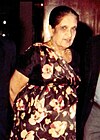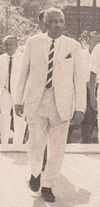Ceylonese parliamentary election, 1970
|
|
|||||||||||||||||||||||||||||||||||||||||||||
|---|---|---|---|---|---|---|---|---|---|---|---|---|---|---|---|---|---|---|---|---|---|---|---|---|---|---|---|---|---|---|---|---|---|---|---|---|---|---|---|---|---|---|---|---|---|
|
|||||||||||||||||||||||||||||||||||||||||||||
|
151 seats to the House of Representatives of Ceylon 76 seats were needed for a majority |
|||||||||||||||||||||||||||||||||||||||||||||
|
|||||||||||||||||||||||||||||||||||||||||||||
|
|||||||||||||||||||||||||||||||||||||||||||||
Dudley Senanayake
United National Party
Sirimavo Bandaranaike
Sri Lanka Freedom Party
General elections were held in Ceylon (now Sri Lanka) in 1970.
SLFP leader Sirimavo Bandaranaike had come to the conclusion that her party's best hope of power was forming a permanent alliance with Ceylon's Marxist parties. She assembled the SLFP, the Trotskyist LSSP, and the Communists into the United Front coalition. The UF's platform was called the Common Programme; it featured extensive nationalization, a more pro-Soviet foreign policy, expanded social programs, and abolition of the Soulbury constitution.
The UNP government of Dudley Senanayake had not made much headway with Ceylon's twin problems of inflation and unemployment. The UNP had become widely perceived as a party of the rich, out of touch with the concerns of ordinary people. The UF's socialist platform had much greater appeal.
The UF (with 49% of the vote) won an overwhelming majority, despite the UNP's plurality of the popular vote, due to the member parties running in different constituencies. The Tamil majority constituencies voted mainly for the two Tamil parties, one of which (the All Ceylon Tamil Congress), later joined the UF.
...
Wikipedia


